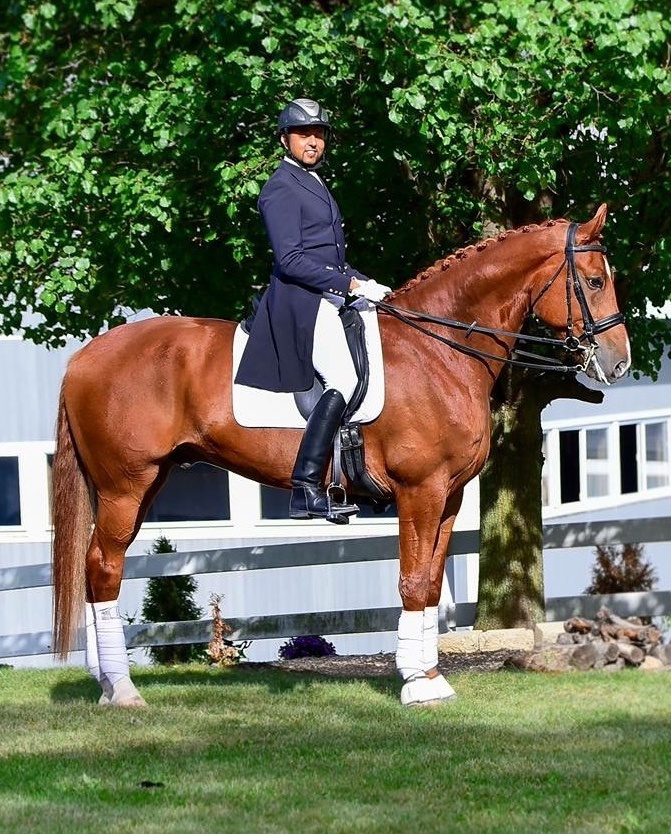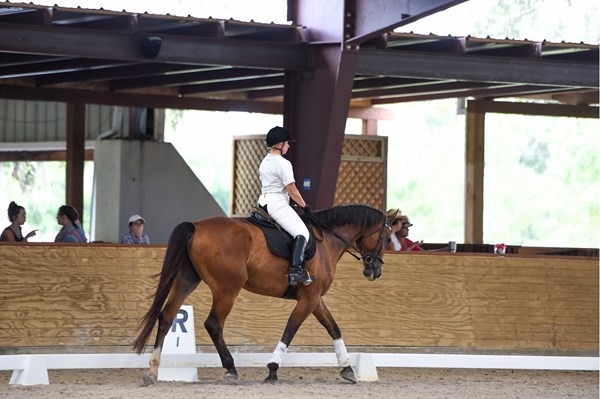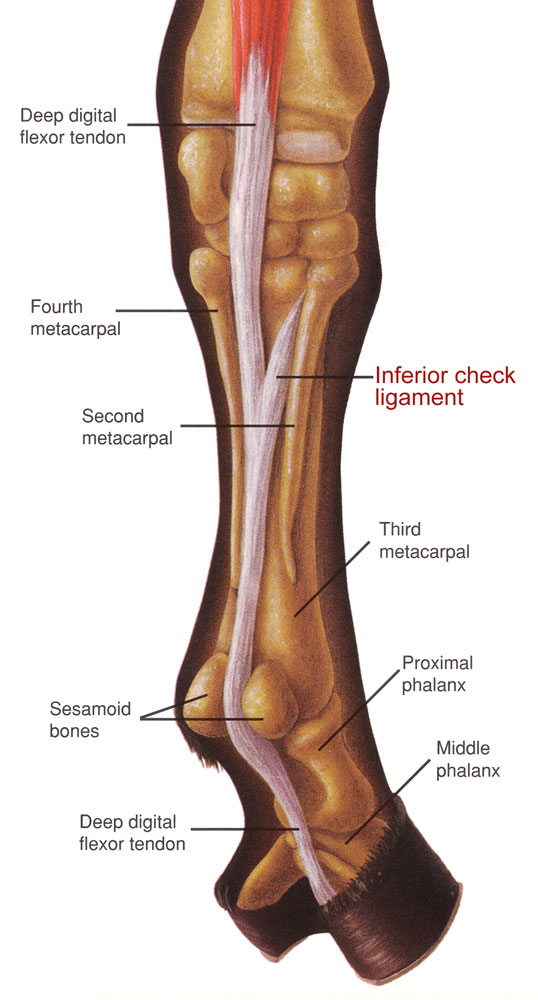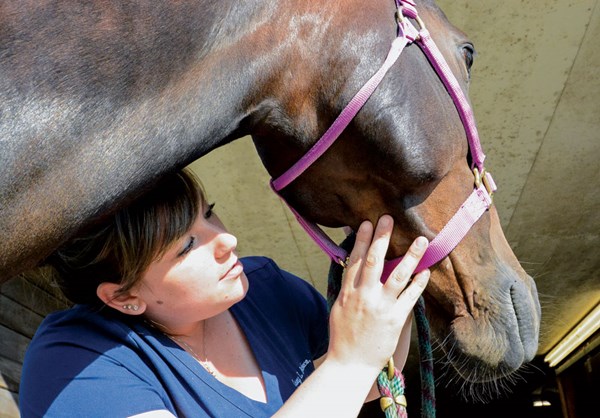When it comes to maintaining a great barn environment, certain pieces of equipment, systems and procedures can help. In this article, top trainers share some of their secrets to a working environment that’s safe, clean and designed to streamline workflow for maximum saddle time and minimum chore time.
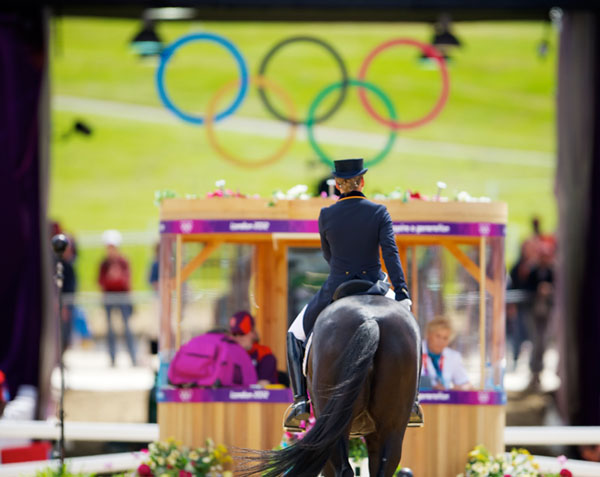
A Productive Setting
International dressage rider Arlene “Tuny” Page says the overall layout of the “H”-shaped main barn at her Stillpoint Farm in Wellington, Florida, is conducive to a productive flow for multiple trainers and clients. The four wings of the building allow for a comfortable degree of privacy. The north and south sides of the barn have shared facilities such as wash racks, bathrooms, a laundry room, kitchen and office. All of these amenities are situated close together in the central aisle of the barn to increase everyone’s efficiency. The design also means the horses can enjoy peace and quiet in their own wing of the stables.
Of course, we can’t all design a large stable like Page did, but similar design concepts are applicable for existing barns of any size. Take a good look at your grooming area, wash racks and tack and feed rooms: Are the items you need every day in easy reach? Equally important, is it easy to put them back into their proper storage space without making a special trip? Asking questions such as these can help you create an environment that is not only safe and tidy but allows for more time in the saddle.
Blanket Racks and Tack Stands
Grand Prix dressage rider and trainer Tami Batts has several tried-and-true strategies for keeping her 20-stall Fellowship Farm in Greensboro, North Carolina, shipshape. One of her favorite tools is a large wall-mounted blanket rack. Each hook extends about 2 1/2 feet and is sturdy enough to hold three heavy blankets. “This blanket rack has been a year-round part of my stable routine for more than 10 years,” says Batts. “It keeps the blankets up off the ground, and if one is damp, you can push the others against the wall and let that one dry out.”
Batts prefers the rack to blanket bars commonly found on stall doors or stall walls. “I don’t care for those because they tend to get abused, with people hanging saddle pads or dirty girths on them,” she says. “The wall-mounted rack makes good use of otherwise wasted storage space, and when it’s not blanket season, the hooks can be used for fly sheets or folded flat against the wall.

In addition to the convenient blanket racks in Batts’s barn is a homemade saddle and bridle stand built by her husband. The wheel-mounted tack stand holds one saddle, four bridles and has room for a tack-cleaning bucket, soap and sponges. The device is particularly useful during summer camp sessions.
Heat Lamps
Batts considers the heat lamps over her wash stalls an indispensible feature. “We believe in keeping our horses’ backs warm,” she explains. “I tell my students to keep their horses’ saddle pads on until the last second before washing the horses down. It’s just like if you are working out at the gym: it’s not good for your muscles if you walk straight from the weight room out to the cold parking lot.”
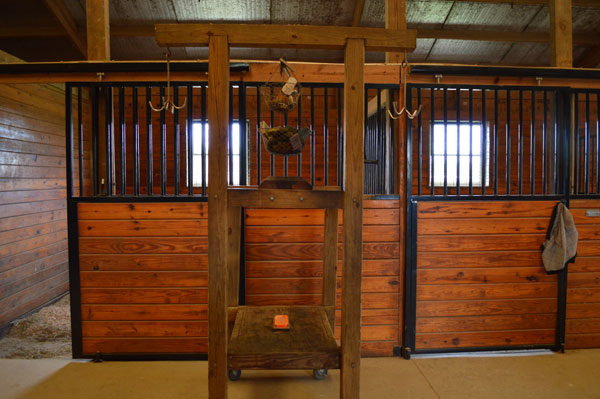
Keeping caregivers’ hands warm is a nice side benefit of the heat lamps. “They are especially nice for vets working in the winter. They help them see better and keep everybody’s hands a little warmer.”
Rigging each heat lamp to an individual timer has helped keep down the considerable costs of having them on, Batts reports. Most of her clients are conscientious about this, but without a timer, it’s easy to go off for a ride and leave the lamps on.
Clean Brushes
Northern California Grand Prix rider Brian Hafner is a clean freak and proud of it. One of the weekly farm chores is to wash all the grooming implements—a simple, but often overlooked, routine anyone can implement in their home stable. Brushes are soaked in a bucket of water and anti-bacterial soap then rinsed well and allowed to dry completely before returning to circulation.
“Using dirty brushes to clean your horse is counterproductive and a great way to spread funguses or any other skin problems,” Hafner says.
Well-Maintained Footing
In addition to cleanliness, farm safety is important to Hafner, who keeps a close eye on the arena footing during the area’s heavy rains. The main task is to make sure the arena’s all-weather footing is ready to withstand the onslaught of water. The footing is dragged with a roller to compress it into a flat surface, which helps eliminate hoofprints and other divots into which water could pool and sink below the surface, slowing the footing’s drying time considerably. After “sealing” the ring, Hafner enforces a no-riding policy until the storms have come and gone and the footing has dried.
Information Boards
If you have your own farm or have ever managed a training facility, you know how time-consuming it can be. Lehua Custer, a Grand Prix dressage trainer and competitor in Los Angeles, California, has 10 to 15 horses in her training program at the Los Angeles Equestrian Center, and keeping track of their nutrition, medicine and exercise needs is made much easier by a stable board.
“A stable board keeps track of which horses need to be grained, turned out, etc., so the grooms, working students and barn employees can all reference it,” says Custer. “In our feed room is a list of every horse and his stall number. We list every meal’s specifications and times. Every food bin is clearly labeled with each horse’s name, and the grain is bagged each week so it’s very easy to carry to each stall.”
Reliable People
In the end, the secret to maintaining a healthy, efficient and safe stable isn’t only about the small conveniences; it’s also about the people doing it. “My biggest asset is knowledgeable barn managers and employees,” says Custer. “The most important part of keeping a barn running smoothly is people who are intelligent with great critical thinking skills.”





